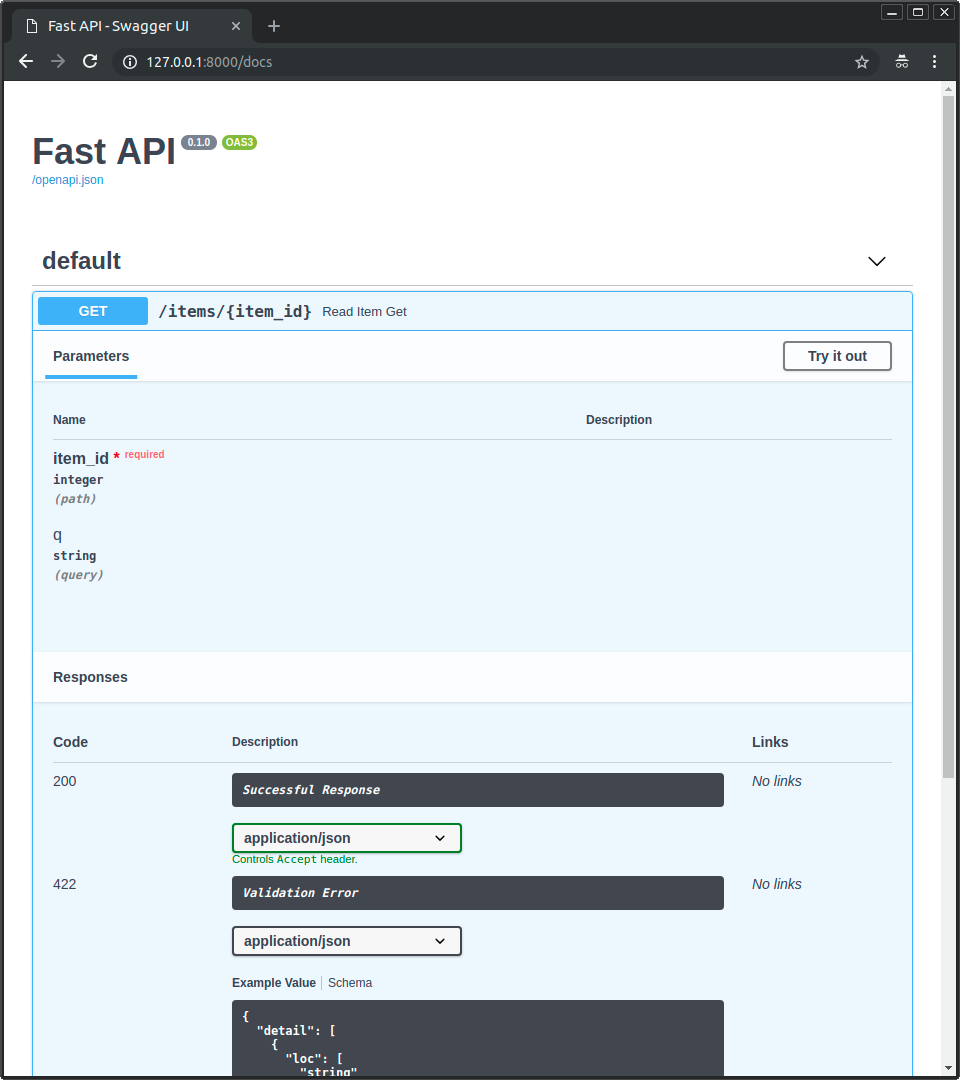- Sort Score
- Result 10 results
- Languages All
Results 491 - 500 of 1,761 for provided (0.05 sec)
-
android/guava/src/com/google/common/util/concurrent/ListenerCallQueue.java
* * <ul> * <li>Multiple events for the same listener are never dispatched concurrently. * <li>Events for the different listeners are dispatched concurrently. * <li>All events for a given listener dispatch on the provided executor. * <li>It is easy for the user to ensure that listeners are never invoked while holding locks. * </ul> * * The last point is subtle. Often the observable object will be managing its own internal state
Registered: Fri Sep 05 12:43:10 UTC 2025 - Last Modified: Tue May 13 17:27:14 UTC 2025 - 8.1K bytes - Viewed (0) -
docs/en/docs/index.md
### Interactive API docs { #interactive-api-docs } Now go to <a href="http://127.0.0.1:8000/docs" class="external-link" target="_blank">http://127.0.0.1:8000/docs</a>. You will see the automatic interactive API documentation (provided by <a href="https://github.com/swagger-api/swagger-ui" class="external-link" target="_blank">Swagger UI</a>): Registered: Sun Sep 07 07:19:17 UTC 2025 - Last Modified: Sun Aug 31 10:49:48 UTC 2025 - 21.3K bytes - Viewed (0) -
android/guava/src/com/google/common/graph/ImmutableValueGraph.java
* <p>See the Guava User's Guide's <a * href="https://github.com/google/guava/wiki/GraphsExplained#immutable-implementations">discussion * of the {@code Immutable*} types</a> for more information on the properties and guarantees * provided by this class. * * @author James Sexton * @author Jens Nyman * @param <N> Node parameter type * @param <V> Value parameter type * @since 20.0 */ @Beta @Immutable(containerOf = {"N", "V"})
Registered: Fri Sep 05 12:43:10 UTC 2025 - Last Modified: Mon Mar 17 20:26:29 UTC 2025 - 7.9K bytes - Viewed (0) -
docs/en/docs/tutorial/metadata.md
| `version` | `string` | The version of the API. This is the version of your own application, not of OpenAPI. For example `2.5.0`. | | `terms_of_service` | `str` | A URL to the Terms of Service for the API. If provided, this has to be a URL. |
Registered: Sun Sep 07 07:19:17 UTC 2025 - Last Modified: Sun Aug 31 09:15:41 UTC 2025 - 5.9K bytes - Viewed (0) -
android/guava/src/com/google/common/collect/Multiset.java
* the standard collection operations {@link #add(Object)} or {@link #remove(Object)} are encouraged * to implement the related methods as well. Finally, two collection views are provided: {@link * #elementSet} contains the distinct elements of the multiset "with duplicates collapsed", and * {@link #entrySet} is similar but contains {@link Entry Multiset.Entry} instances, each providingRegistered: Fri Sep 05 12:43:10 UTC 2025 - Last Modified: Tue Jul 08 18:32:10 UTC 2025 - 19.5K bytes - Viewed (0) -
android/guava/src/com/google/common/util/concurrent/ExecutionSequencer.java
// throwables or completion values. newFuture.setFuture(oldFuture); } else if (outputFuture.isCancelled() && taskExecutor.trySetCancelled()) { // If this CAS succeeds, we know that the provided callable will never be invoked, // so when oldFuture completes it is safe to allow the next submitted task to // proceed. Doing this immediately here lets the next task run without waiting forRegistered: Fri Sep 05 12:43:10 UTC 2025 - Last Modified: Wed Jul 23 15:26:56 UTC 2025 - 22.1K bytes - Viewed (0) -
android/guava/src/com/google/common/primitives/Longs.java
checkArgument(min <= max, "min (%s) must be less than or equal to max (%s)", min, max); return Math.min(Math.max(value, min), max); } /** * Returns the values from each provided array combined into a single array. For example, {@code * concat(new long[] {a, b}, new long[] {}, new long[] {c}} returns the array {@code {a, b, c}}. * * @param arrays zero or more {@code long} arrays
Registered: Fri Sep 05 12:43:10 UTC 2025 - Last Modified: Thu Jul 17 15:26:41 UTC 2025 - 29.1K bytes - Viewed (0) -
android/guava/src/com/google/common/collect/FluentIterable.java
* "https://docs.oracle.com/javase/8/docs/api/java/util/stream/package-summary.html#package.description" * >streams library</a> in a slightly different way. * * <p>The following types of methods are provided: * * <ul> * <li>chaining methods which return a new {@code FluentIterable} based in some way on the * contents of the current one (for example {@link #transform})
Registered: Fri Sep 05 12:43:10 UTC 2025 - Last Modified: Thu Aug 07 16:05:33 UTC 2025 - 35.3K bytes - Viewed (0) -
docs/bucket/replication/README.md
"s3:ListBucketMultipartUploads", "s3:GetBucketLocation", "s3:GetBucketVersioning" ], "Resource": [ "arn:aws:s3:::srcbucket" ] } ] } ``` The access key provided for the replication *target* cluster should have these minimal permissions: ``` { "Version": "2012-10-17", "Statement": [ { "Effect": "Allow", "Action": [ "s3:GetReplicationConfiguration",Registered: Sun Sep 07 19:28:11 UTC 2025 - Last Modified: Tue Aug 12 18:20:36 UTC 2025 - 18.3K bytes - Viewed (0) -
cmd/metacache-stream.go
} r.closer() r.closer = nil r.creator = nil return nil } // metacacheBlockWriter collects blocks and provides a callback to store them. type metacacheBlockWriter struct { wg sync.WaitGroup streamErr error blockEntries int } // newMetacacheBlockWriter provides a streaming block writer. // Each block is the size of the capacity of the input channel.
Registered: Sun Sep 07 19:28:11 UTC 2025 - Last Modified: Wed May 07 15:37:12 UTC 2025 - 19.5K bytes - Viewed (0)